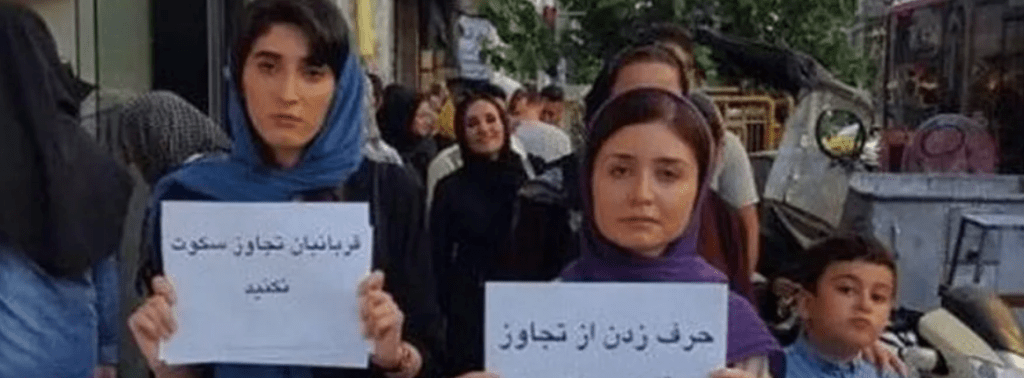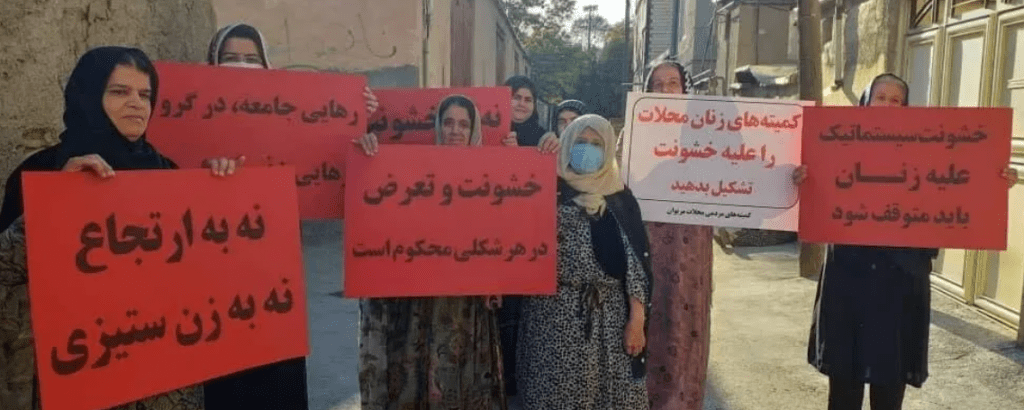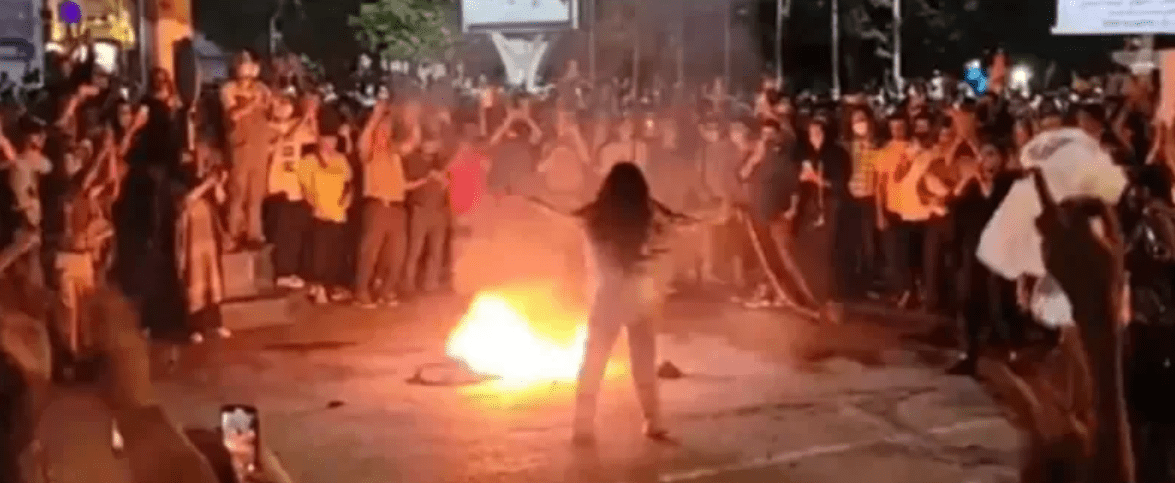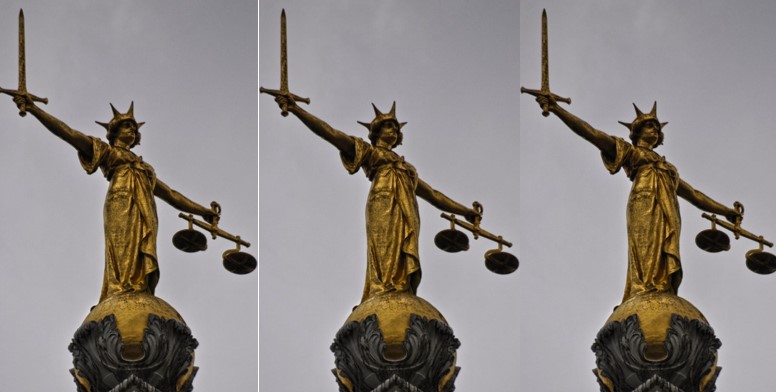From the website of Akhbar-rooz
[Editorial note: this is an extract from an article on the above website, dealing with the history of the women’s movement in Iran]
The establishment of the Islamic Republic of Iran fundamentally destroyed all the achievements of the women’s movement and reduced them to second-class citizens. From the very beginning, the Islamic Republic of Iran issued several decrees that directly affected all aspects of women’s lives and have largely shaped the reality of life in Iran to this day:
- Women need the consent of their husbands, fathers or brothers for work, travel and divorce.
- Women do not have the right to custody.
- The minimum age of marriage and full criminal liability for girls was reduced to 9 years.
- Abortion was banned.
- Gender segregation was implemented in all areas of public life such as public transport, sports, educational institutions and health care.
- Female singers were banned from performing on radio, media and public gatherings.
- Female members of the army were relegated to administrative staff.
- Divorce without the husband’s consent became practically impossible.
- Women were removed from the judiciary and high government positions.
- Strict dress codes, including the hijab for women, became mandatory.
Most of these measures were adopted during the so-called “Cultural Revolution” between 1980-1983. These laws were very broad and dictated religious orders in every sphere of society. But no other group was affected as much as women. They were the first and biggest victims of the revolution, because “the regime controls society through the control of women“. The new rulers violently tried to destroy every achievement of the women’s movement in the last 80 years.
Women the first and biggest victims of the revolution
The Islamic Republic of Iran’s image of women is a fixed image. Khomeini mentions two mythological heroes who are important in Shia Islam: Zaynab – an active fighter alongside her brother Imam Hussein – and Fatima – the imam’s selfless mother who primarily takes care of household duties. These are very different roles – especially if we add them to the main narrative of the mullahs, according to which women are responsible for all moral corruption and the corruption of men.

On the one hand, women should support men – sometimes more actively, sometimes more passively – but at the same time they should not be sexually seductive and misleading. This simultaneity leads to collective uncertainty and has an institutional expression. It means hijab again. Women’s activist Ava Huma writes : “Girls internalize from a young age that there is something fundamentally sinful and shameful about their bodies […] The veil I had to wear was a symbol of alienation from others as well as from myself.”
Khomeini soon announced the return of the mandatory hijab. In doing so, he used the dynamism that Shah had helped create. Reza Shah’s ban on the hijab made the hijab highly politicized. During the revolution, the hijab became a symbol of resistance. Many secular and socialist women used it to show opposition against the monarchy. From then on, Khomeini declared that any nakedness is a relic of the Shah’s era and against the revolution.
But it took some time for the mandatory hijab to be implemented, as the women’s movement rebelled against it one last time. On March 8, 1979, several days of massive demonstrations were held. Among other demands, the preservation of the family protection law, participation in the government and opposition to the compulsory hijab were prominent.
A big conference for women’s unity was also held in December of the same year. In addition, numerous acts of civil disobedience were practiced on a daily basis. The resistance was so strong that Khomeini was initially forced to retreat, but eventually implemented the mandatory hijab. Many prominent women activists were arrested and the Iranian women’s movement was suppressed and pushed back. With the start of the war against Iraq (1988-1988) and the national mobilization, any social movement against the mullahs’ reign of terror was suppressed in the bud.
“Burnt generation” – air to breathe
In the late 1990s, a small window opened for a kind of civil rights movement in Iran. Its heroes came from the “burnt generation” who were born in the first decade of the revolution and with about 20 million people, made up about a quarter of the total population. This generation knew nothing but the rule of the mullahs and had grown up in war, stagnation, and inflation.

A part of Iran’s political elite wanted to show their legitimacy and be attractive to this future generation. They came with reforms and a fresh start and eased some laws. The establishment of non-governmental organisations and newspapers and the holding of meetings were simplified. After the first decade of state terror and war, there was breathing space for the first time. Women played an important role in the front line and base of this movement – whether as students, intellectuals, or as women’s rights activists.
During this time, the reform movement was able to make small progress. In 1996, twelve percent of women were divorced, in 1988, this rate was eight percent. Young Iranian women wanted equality with their husbands, fathers, and brothers. Women constituted 12% of the workforce, which was very close to the figure before the revolution (13%). Despite the efforts of conservative forces to impose strict quotas, women constituted more than 50% of students.
Window only opened for a short time
The minimum age for marriage was increased from nine to thirteen years, and women’s salaries in the public sector were equal to men’s. The number of women’s organisations tripled between 1997 and 2000, and the number of women’s centres increased from 46 to 206. Women were also able to return to political office. In the 1999 municipal elections (the first time since 1980), 297 women were elected to urban councils and 484 women were elected to councils in rural areas.
In 1997, Masoumeh Ebtekar (Vice President for Women and Family Affairs) was the first woman to become a cabinet member in the government of the Islamic Republic of Iran. The “one million signatures” campaign against misogynistic practices attracted a lot of international attention and was an organisational rallying opportunity for young women.
But this window remained open only for a short time and Iranian reformism quickly became an illusion. Today, no trace of Iran’s once powerful women’s movement remains, only a few tightly controlled cultural centres for women are tolerated. The magazine “Zanan” edited by the Iranian feminist, Shahla Shahrat, a monthly magazine by women and for women, which was created in 1992, could not withstand the intervention and censorship of the government and was stopped after more than 20 years of continuous repression.
In the centre: the hijab issue
Iran is currently in a constant social boiling point. Women play an important role in the protests, especially with their daily actions against the hijab. Decentralized campaigns “Sneaky Freedoms” and “White Wednesdays” publish videos on social media every day showing women without hijabs and Islamic clothes – a deeply un-Islamic behaviour and a criminal offense in the Islamic Republic of Iran.

“They walk in public places”. This campaign peaked in December 2017, when Vida Movahed walked on an electrical box in Elkhebal Street, took off her white scarf and waved it in space. Under the hashtag #FrauenderRevolutionsstraß. Many others imitated her and are still encouraging action against the mandatory hijab today.
The importance of the hijab as a cornerstone of the anti-feminist ideology of the Islamic Republic of Iran cannot be ignored: Glineh Atai says: “If the Islamic revolution is to have no other result than the removal of women’s hijab, this is enough for the revolution.”
The most prominent Iranian feminist and human rights activist, Masih Alinejad, concludes the following about the importance of women’s struggle against the mandatory hijab: “The most important tool for controlling society is controlling women. The mandatory veil is our Berlin Wall, and if it falls, the whole system will collapse.”
Text and photographs from https://www.akhbar-rooz.com/



